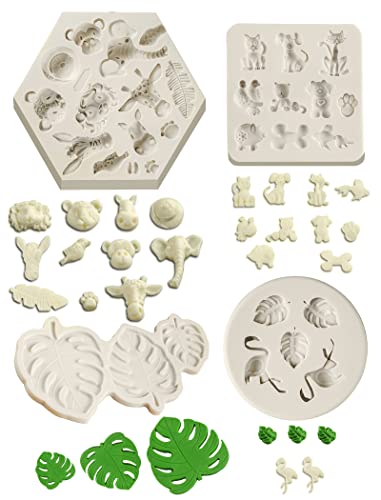There’s something magical about watching a kite dance in the sky. The thrill of seeing your creation soar high above is an experience like no other. If you’ve ever wanted to try your hand at making your own kite, you’re in for a treat! Sewing a fabric kite is not only a fun project but also a chance to unleash your creativity.
Materials Needed
Creating a fabric kite involves choosing the right materials and tools for a successful project. Below, I’ve outlined essential items for sewing a fabric kite, making the process straightforward and enjoyable.
Fabric Selection
Choosing fabric is crucial for your kite’s performance and appearance. Look for lightweight, durable materials such as:
- Ripstop Nylon: Commonly used for kites, this fabric resists tearing and is weather-resistant.
- Polyester: Offers good strength and is often available in vibrant colors.
- Cotton: Great for a softer look, cotton works well for smaller kites.
- Craft Felt: Ideal for designs and patterns, felt can add an artistic touch.
Aim for bright colors or patterns that stand out against the sky. Select fabric sizes, typically ranging from 1 to 3 yards, depending on your kite’s design.
Tools Required
You’ll need specific tools to assemble your kite efficiently. Gather these items:
- Sewing Machine: A standard sewing machine suffices for most fabric types.
- Thread: Use polyester or nylon thread for durability.
- Scissors: Sharp fabric scissors cut through material cleanly.
- Measuring Tape: Ensures precise dimensions for your kite.
- Ruler or Straightedge: Helps draw straight lines for cutting and design.
- Fabric Pins: Secure layers of fabric together while sewing.
- Kite Frame: Consider using lightweight wooden dowels or fiberglass rods to give your kite structure.
With the right fabric and tools at hand, you’re ready to begin crafting your unique fabric kite.
Preparing the Fabric
Preparing the fabric is a crucial step in creating your fabric kite. The right preparation ensures your kite looks great and flies effectively.
Cutting the Fabric
Cutting the fabric accurately is essential. I measure the desired dimensions based on the kite shape I want. I use a rotary cutter or sharp fabric scissors for clean edges. The standard size for a simple diamond kite typically ranges between 40 to 50 inches in height and 30 to 40 inches in width. I recommend adding an extra inch around the edges for seam allowances. After cutting, I check the edges for any fraying or unevenness, which I trim, ensuring a polished final product.
Designing the Kite Shape
Designing the kite shape allows for creativity. I sketch my chosen design on paper first, making notes of measurements and angles. Traditional shapes like diamond or delta are straightforward for beginners. For a diamond shape, I measure equal sides, ensuring symmetry. For a delta kite, I shape a triangle with a wide top and tapered bottom. I mark the fabric lightly with a fabric marker, guiding my cutting process. If I want to add embellishments like pockets or tails, I plan those during the design phase. Each choice contributes to the kite’s overall aesthetic and performance.
Sewing the Kite
Creating a fabric kite involves a careful assembly of pieces and reinforcement for optimal flight. Following these steps ensures a sturdy and vibrant kite that captures attention in the sky.
Assembling the Pieces
Prioritize aligning the fabric pieces carefully. I place the main body fabric right side up on a clean, flat surface. I position the trailing edge and the leading edge fabric strips, aligning them with the body. I secure everything with fabric pins, ensuring no fabric shifts during sewing. I use a sewing machine with a straight stitch, maintaining a seam allowance of about ¼ inch. By sewing along the edges, I create a strong base for my kite. I then repeat this process for the tail of the kite, ensuring it matches in color or theme to add visual consistency. After sewing, I remove the pins gently and inspect all seams for any loose threads.
Reinforcing the Edges
Reinforcing the edges is crucial for durability. I fold the raw edges of the fabric inwards, forming a hem of about ½ inch. I then press this hem with an iron to create a crisp edge. I sew along the folded edge using a straight stitch or zigzag stitch for added strength. When sewing curves—such as the corners of the kite—I occasionally stop, lift the presser foot, pivot the fabric, and resume to maintain the shape. Once all edges are reinforced, I take a moment to examine the kite for any gaps that may weaken the structure. A well-reinforced kite ensures it withstands the wind and provides a fun flying experience.
Attaching the Frame
Attaching the frame is a critical step in ensuring your fabric kite maintains its structure and flies well. Here’s how to successfully select and secure the frame to your kite.
Choosing the Right Frame
Choosing the proper frame significantly affects your kite’s performance. I suggest using lightweight materials like fiberglass or bamboo, which provide the necessary strength without adding unnecessary weight. Standard sizes work well for different kite designs. For instance, a diamond kite typically uses two horizontal and vertical spars, each around 24 to 30 inches long. Ensure the diameter of the frame supports the fabric’s weight and design. Opt for flexible frames that can withstand wind pressure without breaking.

Adding Decorative Elements
Enhancing my fabric kite with decorative elements brings a personal touch and boosts its visual appeal. Creative additions can include painting, personalization, and accessories, making the kite unique.
Painting and Personalization
Painting the fabric allows for endless creativity. I often use fabric paints or markers designed specifically for textiles. After I decide on a design, I sketch it lightly with a pencil. Once that’s done, I apply the paint in thin layers, letting each layer dry before adding more details. For personalization, I also consider adding my name or initials to the kite, ensuring it stands out. Adding glitter paint or glow-in-the-dark elements can also make the kite eye-catching when it soars high.
Adding Tail and Accessories
A tail serves both decorative and functional purposes, stabilizing the kite while adding flair. I typically cut fabric strips or use ribbons in vibrant colors, each about 1-2 inches wide and 24-36 inches long. Attaching the tail to the bottom of the kite securely is essential; I sew or tie it directly to the frame. Accessories like bows, bells, or streamers also enhance the kite’s charm. When choosing accessories, I opt for lightweight materials to keep the kite’s balance intact while flying. These elements create a dynamic display against the sky, making the kite not just a flying object, but a work of art.
Conclusion
Creating a fabric kite is such a rewarding experience. I love the thrill of watching something I made take to the skies. It’s not just about flying a kite; it’s about expressing my creativity and enjoying the process from start to finish.
As you embark on this fun project remember to let your imagination soar. Whether you choose bold colors or unique designs your kite will reflect your personality. Don’t forget to enjoy the time spent crafting and the joy it brings when it dances in the wind.
« Say Goodbye to Sewing Frustrations: Master How to Fix a Misaligned Buttonhole in 5 Simple Steps
Unlock the Secrets: How to Sew with Terry Cloth for Towels Like a Pro »
So grab your materials and get started. I can’t wait to see the amazing kites you create!

















